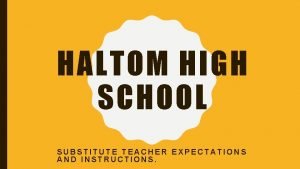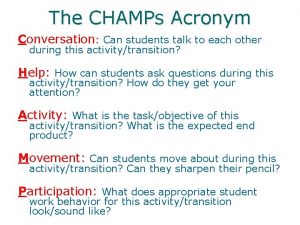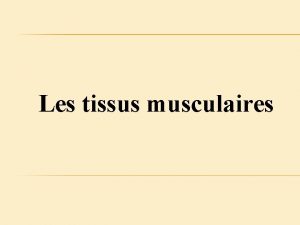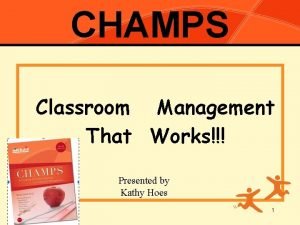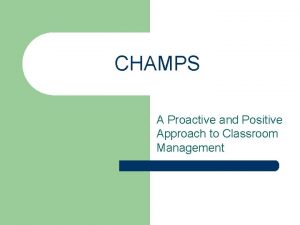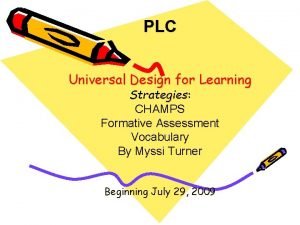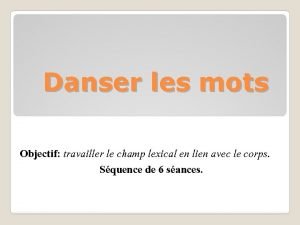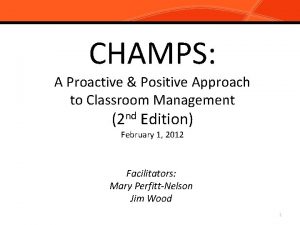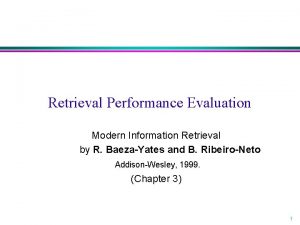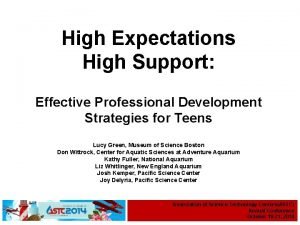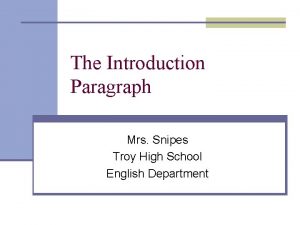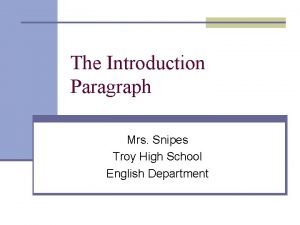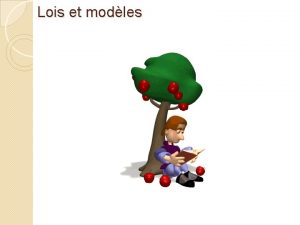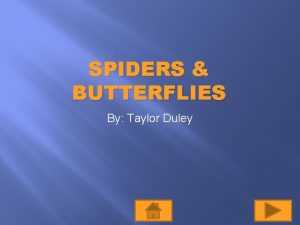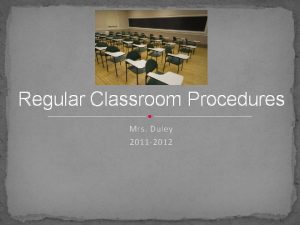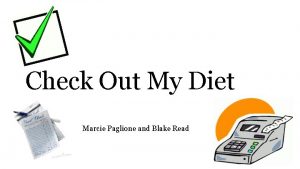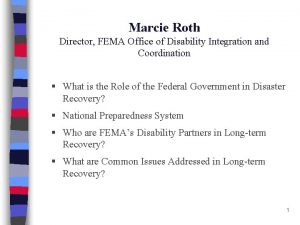An Introduction to CHAMPs Marcie Duley Haltom High






































- Slides: 38

An Introduction to CHAMPs Marcie Duley Haltom High School teacher July 29, 2015

Safe & Civil Schools Dr. Randy Sprick 1) Foundations & PBS 2) START (Safe Transitions & Reduced Tardies) 3) CHAMPs – Proactive Classroom Management 4) Interventions

1) Positive Behavior Support � � � selected group of volunteers (5 -10%) committed to changing the climate, culture and civil atmosphere of HHS. Members come from all areas of the faculty, including administration. Meet on the second and fourth Wednesday of each month from 3: 00 -4: 00 p. m. evaluate progress, data and staff feedback and formulate action plans to facilitate positive changes for Haltom High students and staff

Who is on PBS? � positive attitude � adapt to change � seek a greater potential for our campus � commitment is voluntary, but again, you have been selected carefully and we would greatly appreciate your input and desire to help

What does PBS do? › FORMULATE POLICIES & PROCEDURES for areas needing improvement such as �START on Time �CHAMPs �Universal hall pass expectations and monitoring � 10 minute rule for beginning and end of class �Dress code enforcement �Walk & talk hallway enforcement �Electronic device enforcement

HHS Electronic Policy

Common area expectations

Analyze data › Analyze discipline data per six weeks (watch this…this is the good part!)

2014 2011 2010 Haltom High School – 1 st 6 weeks Classroom disruptions � 159 � 74 � 23 Fights � 8 � 1 � 2 Skipping � 41 � 12 Tardy � 1157 � 1034 � 26 Truancy � 44 � 5 � 7 Threat to assault � 8 � 2

Ratio of Interactions › Building positive relationships with students to increase compliance › Door greeters to welcome students to a positive environment › Positive incentives for compliance for BOTH students and staff �CORE responsibility cards, then empathy… �Faculty drawings for attendance, meeting attendance, BUG cards

2) START on Time Safe Transitions and Reduced Tardies � Tardy Sweeps � Escort students to tardy stations during conference period � WAIT for them to receive tardy pass � Escort students BACK to class � 3 minutes max � Building positive relationships

Analyze data � Analyze tardy data per six weeks

3) CHAMPs: What IS it? 1. A set of decisions the teacher must 2. 3. 4. 5. make in order to structure for OUR STUDENTS TODAY. A template A process An acronym A common language among staff members

The research says that you can avoid most of these problems… …by clearly defining for yourself and then communicating to your students how you expect them to behave.

The Target for Schools: SAFE, CIVIL AND PRODUCTIVE Staff/Student Relationships Positive Structure Interactions for Success

3 Categories of Students Intensive— 7 -8% Targeted— 20% Universal— 60 -75%

Implications � If you provide the appropriate amount of structure you can prevent a large portion of potential misbehavior in your classroom � We should spend more time promoting responsible behavior than dealing with irresponsible behavior (building positive relationships!!!)

STOIC: An Intervention Planning Model � Structure for Success � Teach Expectations � Observe and Monitor � Interact Positively � Correct Fluently

STOIC � CORRECT MISBEHAVIOR FLUENTLY � If consequences are too harsh, it makes you inconsistent. � “An eye for an eye will make the whole world go blind. ” � Eliminate the (+) effect that kids get from the (-) behavior

Implications � If you are going to be able to enforce your rules and expect students to follow rules, you have to know what they are and you have to be able to quickly tell when a rule has been broken.

Students can hit any target they can see… and that will sit still for them! - Dr. Richard Stiggins

Which one are you at 2: 40 p. m. ?

When your expectations are clear, students never have to guess how you expect them to behave.

STOIC � TEACH YOUR EXPECTATIONS � What are your expectations? � BE NAUSEATINGLY CLEAR!!! � Only teach immediately before engaging students in THAT activity � What does “on-task” look like? � Are expectations visible all year?

One Strategy TO TEACH EXPECTATIONS: The CHAMPs Acronym � C – Conversation: Can students talk to each other during this activity/transition? � H – Help: How can students get questions answered during this activity/transition? How do they get your attention? � A – Activity: What is the task/objective of this activity/transition? What is the expected end product? What do you want to Accomplish? � M – Movement: Can students move about during this activity/transition? � P – Participation: What does appropriate student behavior for this activity look/sound like? How do students show that they are participating?

How many CHAMPs do I need? › › › Teacher-directed instruction Independent seat work Class discussions Cooperative group work Small group discussion Taking tests/quizzes › Centers/lab stations, video/media presentation

Examples of RULES from HHS…

We want you to post your expectations for students.



Making “IT” Happen in the Classroom! TEACH EXPECTATIONS BEFORE the ACTIVITY or TRANSITION MONITOR BEHAVIOR by CIRCULATING and SCANNING PROVIDE FEEDBACK DURING and AFTER the activity Begin the cycle again for the next activity 31

Feedback – Peer observation

Teacher observation form

Admin STAAR walk through


Teacher input

CHAMPs is a set of decisions that YOU make for your classroom to make YOU and your students happy!

What does this mean for BISD? � Action teams – Planning for Learning � Train a group from each campus � Consider sending a team to Safe & Civil Schools conference in Oregon in July 2016 � Common language among feeder schools � Common language among the district � Train new hires at orientation
 Haltom high school dress code
Haltom high school dress code Haltom high school summer school
Haltom high school summer school Fueled marcie hans
Fueled marcie hans The vacuum cleaner sulks in the corner closet
The vacuum cleaner sulks in the corner closet Brocku supersearch
Brocku supersearch Marcie lipsitt wall of shame
Marcie lipsitt wall of shame Being safe
Being safe C.h.a.m.p.s acronym
C.h.a.m.p.s acronym Champ de conheim
Champ de conheim Parole champs des partisans
Parole champs des partisans Champs discipline
Champs discipline Champs voice levels
Champs voice levels Mdch champs
Mdch champs Champs conversation levels
Champs conversation levels Little champs marcellus
Little champs marcellus Deviner champ lexical
Deviner champ lexical Champ lexical du mouvement
Champ lexical du mouvement Bibliothèque champs manceaux rennes
Bibliothèque champs manceaux rennes Champs pulmonaires clairs
Champs pulmonaires clairs Champs jacksonville fl
Champs jacksonville fl Champs classroom management book
Champs classroom management book Au coeur des champs
Au coeur des champs Valo champs
Valo champs Champs mini golf
Champs mini golf High precision vs high recall
High precision vs high recall High precision vs high recall
High precision vs high recall Supportive behavior
Supportive behavior High expectations high support
High expectations high support Low accuracy low precision
Low accuracy low precision Directive behavior
Directive behavior Pengertian investasi
Pengertian investasi High school introduction paragraph
High school introduction paragraph High voltage technology
High voltage technology High-density-interconnection
High-density-interconnection Chromatography uses
Chromatography uses High bias low variance introduction to machine learning
High bias low variance introduction to machine learning Snipes troy
Snipes troy High performance liquid chromatography introduction
High performance liquid chromatography introduction Body paragraph
Body paragraph
